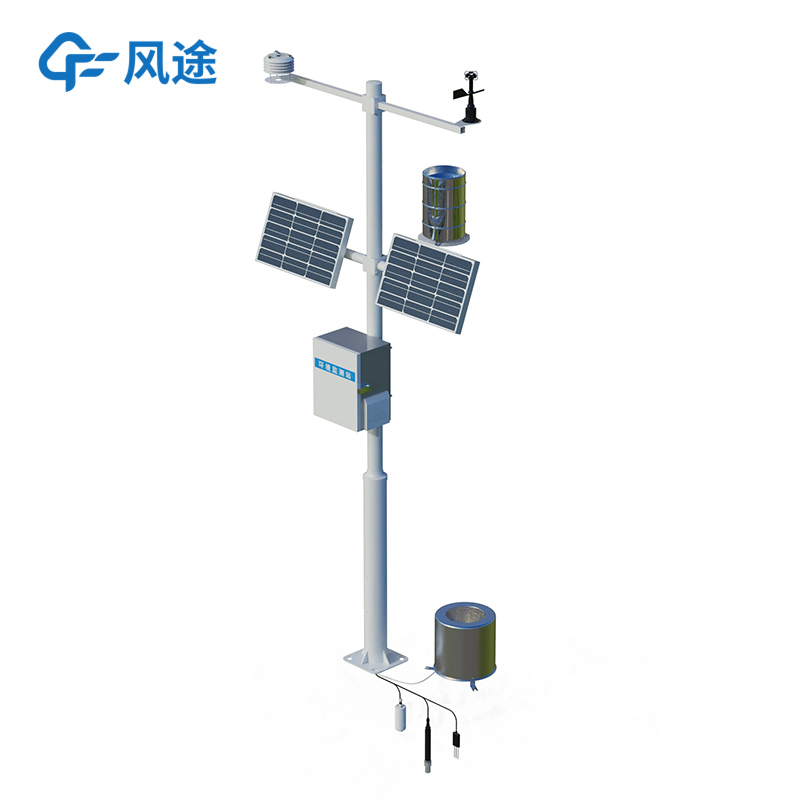Shandong Fengtu IOT Technology Co., Ltd
Sales Manager:Ms. Emily Wang
Cel,Whatsapp,Wechat:+86 15898932201
Email:info@fengtutec.com
Add:No. 155 Optoelectronic Industry Accelerator, Gaoxin District, Weifang, Shandong, China

Sales Manager:Ms. Emily Wang
Cel,Whatsapp,Wechat:+86 15898932201
Email:info@fengtutec.com
Add:No. 155 Optoelectronic Industry Accelerator, Gaoxin District, Weifang, Shandong, China
time:2025-10-23 09:21:38 source:Weather Station viewed:143 time
In the field of modern agriculture, with the popularization of precision agriculture and smart agriculture concepts, there is an increasing demand for quantitative management and scientific decision-making in agricultural production environments. Agrometeorological stations have emerged as automated monitoring devices deployed in farm fields to continuously and real-time collect various environmental and meteorological data closely related to crop growth.
These instruments can measure multiple meteorological parameters, typically including:
Air Temperature and Humidity: Reflecting the basic thermal and moisture conditions for crop growth.
Wind Speed and Direction: Affecting pollen transmission, pesticide spraying effectiveness, and crop transpiration.
Rainfall: Providing direct precipitation data for irrigation management and drought/flood assessment.
Solar Radiation: Measuring the amount of energy available for plant photosynthesis.
Soil Temperature and Moisture: Directly monitoring the environmental conditions in the crop root zone.
This real-time data is transmitted via wireless networks to agricultural management platforms, providing decision-making basis for farmers, cooperatives, and agricultural research institutions. It supports specific agricultural activities such as irrigation, fertilization, pest control, and severe weather warning, thereby improving resource utilization efficiency and agricultural production benefits.
How to Choose Agrometeorological Stations?
First, determine which meteorological elements you must monitor. For example, if irrigation and soil moisture dynamics are your primary concerns, then equipment like multi-parameter soil moisture and meteorological monitors that can measure soil moisture at different depths would be more suitable. For scientific research purposes, you may need models that can measure specialized parameters such as photosynthetically active radiation and net radiation.
Pay attention to power supply and data transmission methods. Agricultural meteorological stations are often deployed in remote fields, so power supply and data transmission are crucial. Most products on the market now use solar panels combined with storage batteries to achieve long-term unattended monitoring. For data transmission, GPRS wireless transmission is the mainstream method, facilitating remote data upload to cloud platforms or servers.
If there is a possibility of adding monitoring elements in the future, choose products with rich sensor interfaces and expansion capabilities. Understand the installation difficulty and waterproof/dustproof rating of the equipment, as these relate to its stability and service life in harsh field environments.

In the field of modern agriculture, with the popularization of precision agriculture and smart agriculture concepts, there is an increasing demand for quantitative management and scientific decision-making in agricultural production environments. Agrometeorological stations have emerged as automated...
In an era when tourism is booming, tourists are no longer satisfied with just beautiful scenery. They are paying increasing attention to the environmental quality of scenic spots, especially the air quality. Thus, the negative oxygen ion monitoring system has become an indispensable part of modern s...
Large-field agriculture is a production method that involves crop cultivation on large areas of farmland, mainly including the large-scale planting of food crops, oil crops and cash crops. For example, a large area of the Northeast Plain in China is planted with corn, soybeans and so on. Its product...
The Fengtu Small Automatic Weather Station simultaneously conducts real-time monitoring of six core meteorological parameters: wind speed, wind direction, temperature, humidity, air pressure, and optical rainfall. The wind speed and direction sensors have a range of 0 to 60 m/s, with an accuracy of...